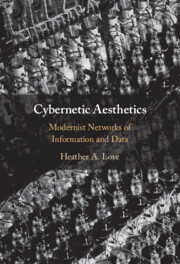Никола Бенин
Cybernetic
Aesthetics draws from cybernetics theory and terminology to interpret the
communication structures and reading strategies that modernist text cultivate.
In doing so, Heather A. Love shows how cybernetic approaches to communication
emerged long before World War II; they flourished in the literature of
modernism's most innovative authors. This book engages a range of literary
authors, including Ezra Pound, John Dos Passos, Gertrude Stein, Virginia Woolf,
and James Joyce, and cybernetics theorists, such as Norbert Wiener, Claude
Shannon, Ross Ashby, Silvan Tomkins, Margaret Mead, Gregory Bateson, and Mary
Catherine Bateson. Through comparative analysis, Love uncovers cybernetics'
relevance to modernism and articulates modernism's role in shaping the cultural
conditions that produced not merely technological cybernetics, but also the
more diffuse notion of cybernetic thinking that still exerts its influence
today.
Expands our
understanding of literary modernism's interdisciplinary relevance
Offers new
analyses of texts by modernist authors Ezra Pound, John Dos Passos, Virginia
Woolf, and Gertrude Stein (and, to a smaller degree, James Joyce and Arthur
Conan Doyle)
Reconceives
cybernetics historiography by locating a cultural pre-history to cybernetics'
technological innovations in modernist literature's formal experiments.
Table of Contents
Introduction: Cybernetic Thinking and Modernist Literature
1. Feedback Loops and Learning from the Past: Ezra Pound's
Poetics of Transmission
2. The Cybernetic Information Dialectic: Patterns,
Randomness and Newsreel in John Dos Passos's USA
3. Black Box Subjectivity: Associative Language, Affect, and
Radio Blindness in Virginia Woolf's The Waves
4. Cultural Composition, Insistent Spirals, and Definition
by Contrast: Gertrude Stein as Second-Order Cybernetic Anthropologist
Coda: Retrospective and Prospective Readings of Cybernetic
Aesthetics.

Няма коментари:
Публикуване на коментар